Broadmeadow has been in the news recently, with the Department of Planning and Environment releasing their “Hunter Regional Plan 2041”. The document flags Broadmeadow as a “regionally significant growth area” and promises to make it “a destination of choice for entertainment, housing, recreation and discovery.”
This is not the first time the area has been subject to great change, as the photos this month demonstrate. A 2016 aerial photo shows the area bounded by Griffith Rd, Turton Rd, Broadmeadow Rd and the stormwater drain, filled with sporting grounds, trotting track, entertainment facilities, commercial and residential buildings. In contrast, seven decades years earlier it was an empty paddock, the site of District Park Aerodrome.
Originally a swampy lowland, the completion of a large concrete stormwater channel in 1899 allowed the surrounding area to be developed for recreation. The government reserved a portion for aviation purposes in 1923 and in 1928 the Newcastle Aero Club formed and began using the aerodrome. However, the combination of increasing aircraft movements and residential development posed a very real danger to the public.
On 20 January 1953, 70 years ago this month, newly qualified solo pilot Alan Kerle was practicing landings in an aero club Tiger Moth. As he landed, the plane bounced, was caught by a cross wind and carried across Turton-road where it brushed a rooftop, plunged into the back yard of Cedric Jenkins and burst into flames. Just minutes beforehand four children had been playing in the yard. Despite the damage the pilot walked away uninjured. Between 1931 and 1954 the newspapers reported 13 plane crashes at or near the aerodrome. The suitability of the site was increasingly questioned. In 1961 the Department of Civil Aviation gave notice to the Aero Club to vacate the Broadmeadow airfield, and they soon relocated to Rutherford. The government’s grand plans for aviation in District Park had proved unworkable. Let’s hope their grand plans for Broadmeadow in 2041 prove to be of long-lasting value.
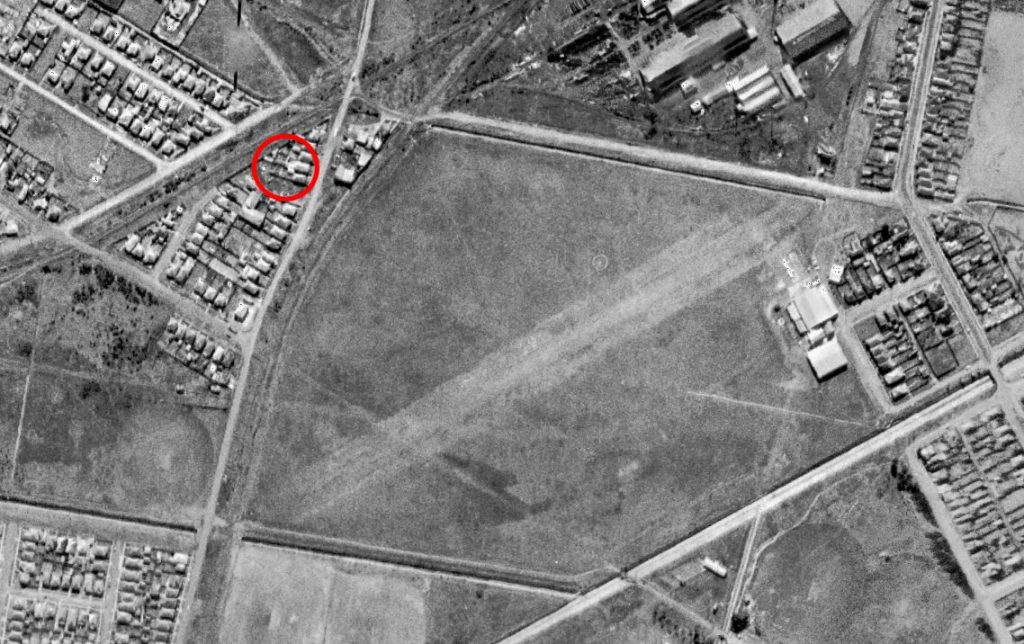
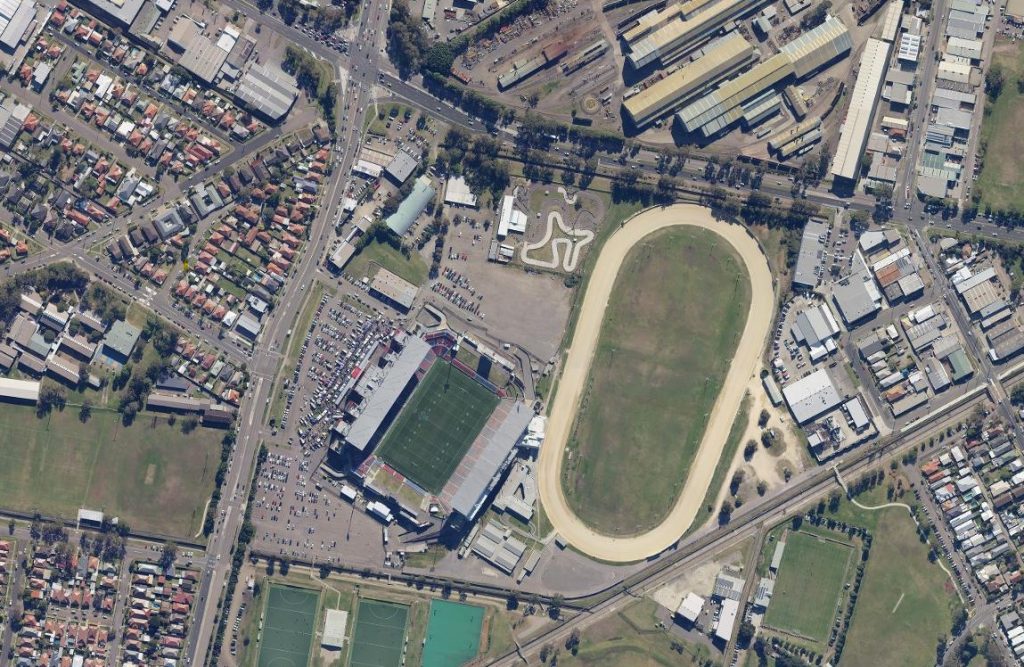

The article above was first published in the January 2023 edition of The Local.
Broadmeadow Aerodrome
Further information about the history of the Broadmeadow Aerodrome can be found in my August 2019 article on the crash of a C47 aircraft in 1944.

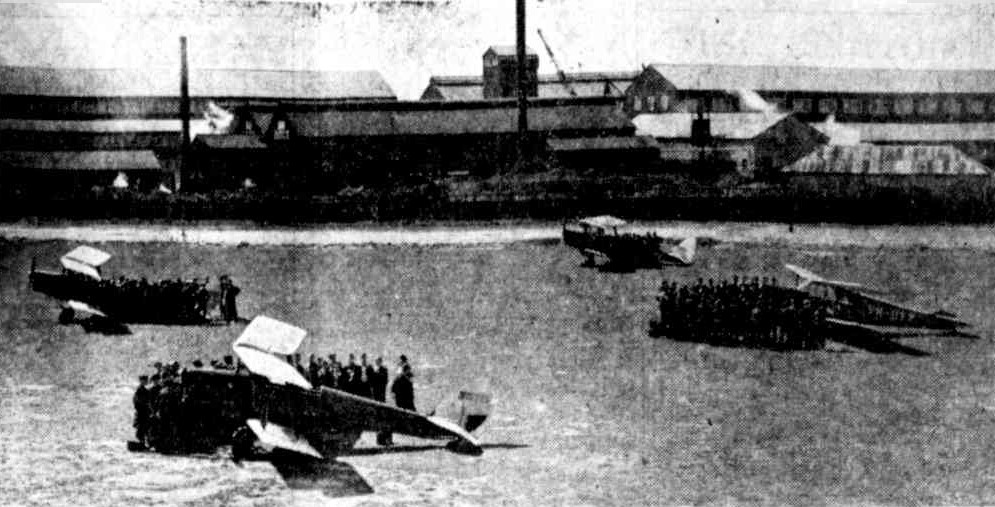
The 1953 Tiger Moth crash
The Newcastle Morning Herald and Miners’ Advocate report of the January 1953 Tiger Moth crash states that the plane crashed into the backyard of Mr C Jenkins, in Turton Road New Lambton. It also states that the Goodbun family lived in the neighbouring property. Title deeds in the Historical Land Records Viewer site show that in 1953 the Goodbun’s owned Lot A of DP19321 (Vol-Fol 5630-190), and Cedric Jenkins owned Lot 5 of DP19321 (Vol-Fol 5230-223). This corresponds to 267 and 269 Turton Road, New Lambton.
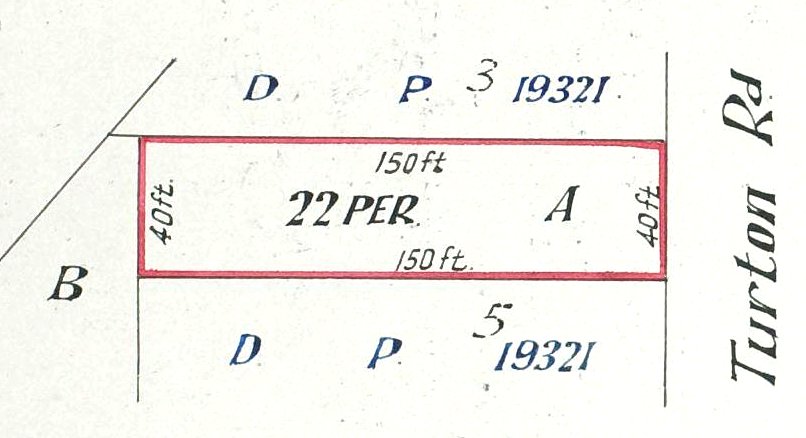
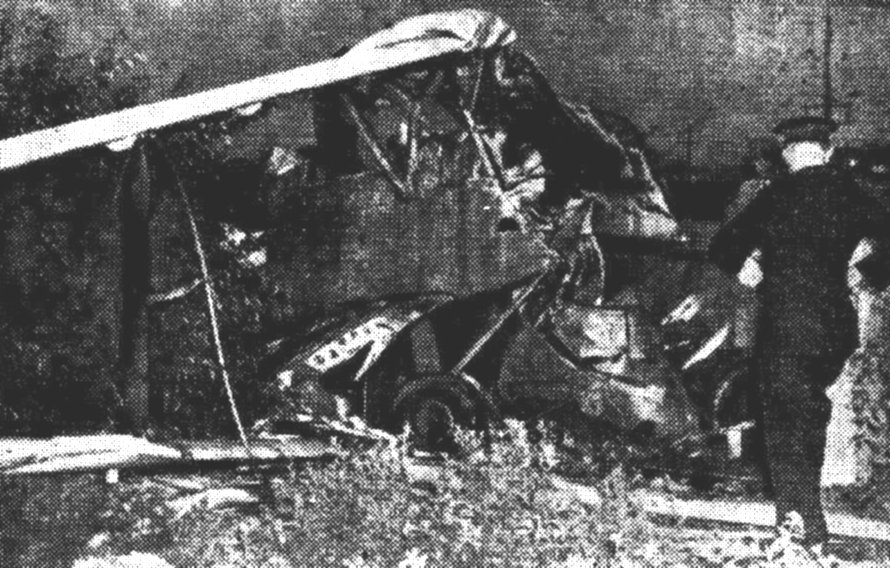


Other Broadmeadow aeorodrome crashes
The following table summarises airplane accidents that occurred at or near the Broadmeadow (District Park) aerodrome that were reported in the newspapers. This is not a comprehensive list of all incidents that occurred. For example, the report on 12 August 1944 notes that the stormwater drain has caused “7 crashes in 2 years”, however only two of those crashed seem to have been reported in the papers.
| Date | Plane | Notes |
| 8/3/1931 | De Havilland Moth, “Sky Hawk” | The plane fell into a spin at an altitude of 2000 feet and crashed into a paddock adjoining the aerodrome. Pilot (E Buck) and passenger (G Lynch) uninjured. |
| 18/8/1935 | Tiger Moth, “Halcyon” | The propeller caught in street lighting wires while the machine was making a forced landing. The pilot, Captain H. S. Preston, was uninjured, but the machine was severely damaged. |
| 26/9/1935 | Westland Widgeon | Two accidents in 2 days! Damage to the undercarriage in 26/9/1935, and then the following day “the ‘plane struck some rough ground at the south-eastern end and pitched forward on to its nose. The fuselage, undercarriage, and propeller were damaged, and Mr. Hall received lacerations to an ankle.” |
| 28/11/1935 | Monospar, “City of Grafton” | Wheel collapsed on landing. |
| 7/9/1936 | High wing monoplane, “Sky Baby” | Forced down with engine trouble. Crashed in Lindsay Street Hamilton after hitting an electric light pole. Pilot Frank Cook pulled unconscious from the wreckage, and treated at hospital for abrasions and contusions to the face, lacerations, slight concussion, and shock. |
| 11/9/1943 | Beaufort bomber | Engine trouble, with white smoke issuing from the Beaufort bomber. The plane made a right hand turn, to land at Broadmeadow aerodrome, hit some trees in District Park and immediately burst into flames. The plane then hit the side of a deep stormwater drain, skidded on to the tramline, and came to rest in Lambton-road, Broadmeadow. Flight Sergeant William Milton Trengove, 34, navigator, of Spalding, South Australia, died later in Newcastle Hospital. |
| ?/?/1944 | Boomerang fighter | “An R.A.A.F, man was injured when a Boomerang fighter struck the channel early this year” |
| 10/8/1944 | C47 Douglas | A U.S. Army transport plane, making a forced landing in a storm at Newcastle, crashed into a stormwater channel at Broadmeadow aerodrome. In the past 10 months two other planes have crashed into the stormwater drain while trying to land at Broadmeadow. Two U.S. airmen were injured in the crash. The pilot suffered a broken nose and abrasions, and the radio operator head injuries. |
| 4/8/1947 | Wackett trainer | A Wackett trainer belonging to the Newcastle Aero Club, took off from the Broadmeadow aerodrome.The engine cut out at 150 to 200 feet, and the pilot brought it down in a paddock, narrowly missing two people walking along a track. The pilot (Dick Gilford, 22, of Carrington Parade, New Lambton), and passenger (Mr. A. Gilford) were uninjured. |
| 16/4/1950 | Wackett trainer | After engine failure, the pilot Jack Stone crash landed the Wackett trainer on rough, undulating ground off Turton-road near District Park aerodrome. The plane was damaged, but the pilot was uninjured. |
| 8/12/1951 | Ryan monoplane | Two men scrambled unhurt from the cockpit of a Ryan monoplane which crashed on a narrow vacant allotment near Broadmeadow aerodrome. They are Louis Plumstead of Beresfield, an instructor employed at the Newcastle Aero Club, and his pupil, Victor Boyce, of Maitland. |
| 20/1/1953 | Tiger Moth | A Tiger Moth plane partly unroofed a house, crashed into a fence, and burst into flames. The pilot, Alan Roger Kerle, 24, of Boyce Street, Taree. climbed from the wreckage unhurt. |
| 27/7/1954 | De Havilland Hornet bi-plane | The undercarriage of the aircraft collapsed when the plane was landing. The plane slewed wildly across the runway and its port wings ploughed into the ground. |
| 1960 | Cessna 172 | “badly damaged soon after arrival in an unfortunate accident” |

Newcastle Morning Herald and Miners’ Advocate, 16 April 1950.
Newspaper articles
| Article Date Event Date | Notes |
|---|---|
| 25 Mar 1923 | Portion of District Park gazetted "for public recreation and aviation purposes." |
| 9 Mar 1931 8 Mar 1931 | Mr. E. Buck's "Sky Hawk," a De Havilland Moth 'plane, at District Park, yesterday with one passenger aboard (Mr. G. Lynch, of Waratah) fell into a spin at an altitude of 2000 feet and crashed into a paddock adjoining the aerodrome." |
| 19 Aug 1935 18 Aug 1935 | "Newcastle Aero Club's new Tiger Moth biplane, the Halcyon, crashed at District Park late yesterday afternoon. The pilot, Captain H. S. Preston, was uninjured, but the machine was severely damaged." |
| 27 Sep 1935 26 Sep 1935 | "THE Westland-Widgeon 'plane, which was involved in a sensational crash at the District Park Aerodrome last evening, wrecking the undercarriage, figured in another accident this afternoon. AFTER repairs had been effected to the landing gear, the owner, Mr. Hall, made a preliminary flight prior to leaving for Sydney. When returning to the 'drome, however, the 'plane struck some rough ground at the south-eastern end and pitched forward on to its nose. The fuselage, undercarriage, and propeller were damaged, and Mr. Hall received lacerations to an ankle." |
| 28 Nov 1935 | "Five passengers in the airliner 'City of Grafton' had remarkable escapes this morning when a wheel collapsed after the big 'plane had landed at District Park aerodrome, throwing the 'plane on to its side." |
| 13 Dec 1935 | "The discovery of four slashes in the fabric underneath the wing of an aeroplane shortly before it was due to take off caused a stir at District Park Aerodrome this morning. Mr. Henry said that the incident illustrated the need for public hangars at all important aerodromes." |
| 8 Sep 1936 7 Sep 1936 | "The small high wing monoplane Sky Baby crashed in one of Newcastle's most thickly populated suburban thoroughfares, Lindsay-street, Hamilton, shortly after 5 p.m. to-day. The right wing struck an electric light pole and was torn off. The machine finished partly on the footpath." |
| 6 Oct 1943 11 Sep 1943 | Inquest into the death of Flight Sergeant William Milton Trengove, who died in a plane crash at Broadmeadow on 11 September 1943. |
| 2 Jun 1944 | Calls to improve Broadmeadow aerodrome … "The present aerodrome is entirely inadequate for the future needs of a city the size of Newcastle,' said Mr. Cavalier, "Further, it is in its present size a danger to certain types of aircraft." |
| 11 Aug 1944 10 Aug 1944 | "A U.S. Army transport plane, making a forced landing in a storm at Newcastle yesterday, crashed into a stormwater channel at Broadmeadow aerodrome. Two U.S. airmen were injured." |
| 4 Aug 1947 | "A pilot, with his father as passenger, crashed in an emergency landing at East Lambton today. Neither was injured. The pilot is Dick Gilford, 22, of Carrington Parade, New Lambton, the passenger is Mr. A. Gilford, of the same address. The plane, a Wackett trainer belonging to the Newcastle Aero Club, had taken off from the Broadmeadow aerodrome. The engine cut out at 150 to 200 feet, and the pilot brought it down in a paddock, narrowly missing two people walking along a track." |
| 17 Apr 1950 16 Apr 1950 | "The pilot of a Wackett trainer plane escaped injury when he crash landed on rough, undulating ground off Turton-road near District Park aerodrome yesterday afternoon." |
| 9 Dec 1951 8 Dec 1951 | "Two men scrambled unhurt from the cockpit of a Ryan monoplane which crashed on a narrow vacant allotment near Broadmeadow aerodrome this afternoon. The engine cut out soon after the plane took off from the aerodrome." |
| 21 Jan 1953 20 Jan 1953 | "When a Tiger Moth plane crashed today it partly unroofed a house, crashed into a fence, and burst into flames. The pilot climbed from the wreckage unhurt. As flames reached the petrol tank a bus driver put them out with an extinguisher from his bus. The pilot of the plane is Alan Roger Kerle, 24, of Boyce Street, Taree. He is a student pilot of Newcastle Aero Club. The crash occurred as he was landing the plane on Newcastle aerodrome." (The Daily Telegraph) |
| 21 Jan 1953 20 Jan 1953 | "When a Tiger Moth aircraft crashed into the backyard of a home in Turton Road, Waratah, a suburb of Newcastle, shortly before 5.30 p.m. to-day it missed a woman and four children by four feet. The sole occupant, Alan Roger Kerle, 24, of Boyce-Street, Taree, was not injured." (The Sydney Morning Herald.) |
| 21 Jan 1953 20 Jan 1953 | "A Tiger Moth plane owned by Newcastle Aero Club crashed in the backyard of Mr. C. Jenkins's property in Turton road, New Lambton, late yesterday afternoon. The plane was extensively damaged but the pilot, Alan Roger Kerle, 24, of Taree, who had made his first solo flight on Sunday, climbed uninjured from the cockpit. A wing hits the edge of a fernery in a house adjoining and caught fire. The plane dropped on to its nose, pivoted, and then landed on its wheels." (Newcastle Morning Herald and Miners' Advocate.) |
| 28 Jul 1954 27 Jul 1954 | "A De Havilland Hornet bi-plane, crashed on landing at Broadmeadow about 5 p.m. today. Crew of the plane, Mr. J. Neal, of Tamworth (pilot) and Capt. R. Hall, of East. West Airlines (navigator) were uninjured in the crash. The undercarriage of the air craft collapsed when the plane was landing. The plane slewed wildly across the runway and its port wings ploughed into the ground." |

This is simply incredible History!!! did you notice that on almost every occasion the pilot did NOT die????? How incredibly SAFE is the beloved Tiger Moth???
I do hope no one forgets that the RAAF “took over” that very field in WW2 and trained pilots to “ab-initio” basically to First Solo whence they went to Base Williamtown to become our Fighter Pilots or to Base Richmond to fly our heavy aircraft!! That Broadmeadow site is an incredibly special place in our Australian History!! It is now where our wonderful Knights RFL team is based and where other sports enjoy great times! ROYAL Newcastle Aero Club received the “Royal Prefix” from King George Sixth for our War Efforts!! The Club is still a Community Service Club, managed as it always has been by VOLUNTEER Enthusiast of Aviation!! It is STILL directly involved at Base Williamtown by assisting very much in the operational survival of the Base’s RAAF Williamtown Flying Club!, which has changed the careers of many young RAAF Members over fifty years or more by teaching them to fly and then, sometimes, helping them re-muster to RAAF Pilot!!